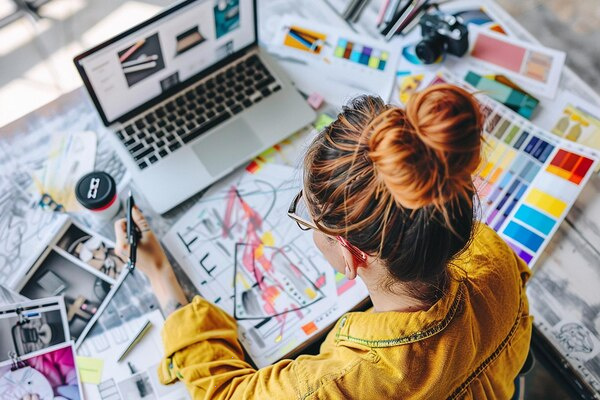Mastering Vector Art: Tips and Techniques from My Technoo

In recent years, vector art has steadily gained prominence in digital design, renowned for its scalability, precision, and versatility. As technology continues to evolve, the future of vector art appears brighter than ever, promising new opportunities and innovations that will reshape the way designers and artists approach their craft.
Vector art differs from raster graphics in that it is created using mathematical equations rather than pixels. This fundamental difference allows vector graphics to be scaled infinitely without losing any quality, making them an invaluable asset in digital design. The rise of high-resolution displays and diverse screen sizes has only intensified the need for scalable graphics, positioning vector art as a cornerstone of modern digital design.
One of the key areas where vector art is making a significant impact is in the realm of web design. With responsive web design becoming the standard, vector graphics offer an ideal solution for ensuring that visuals look crisp and clear on any device, from smartphones to large desktop monitors. SVG (Scalable Vector Graphics) has become a preferred format for web designers, enabling powerful interactivity and animation while maintaining minimal file sizes for faster loading times.
The advent of augmented reality (AR) and virtual reality (VR) technology further underscores the importance of vector art in digital design. In these immersive environments, precision and clarity are paramount. Vector graphics provide the detailed and scalable imagery required to create lifelike and engaging experiences. As AR/VR technology becomes more mainstream, the demand for high-quality vector art will undoubtedly increase, driving innovation in tools and techniques.
Artificial intelligence (AI) and machine learning (ML) are also poised to t2ic8 the landscape of vector art. AI-powered tools are already streamlining the vector creation process, offering features such as automated path generation, pattern recognition, and even style imitation. These advancements will allow designers to work more efficiently, freeing up time for creativity and experimentation. Moreover, AI-driven analytics can provide insights into design trends and user preferences, helping artists create more impactful and relevant work.
Collaboration and accessibility are two more areas where the future of vector art is evolving. Cloud-based vector graphic editors are gaining traction, enabling designers to work collaboratively in real-time, regardless of geographical location. This shift not only fosters teamwork but also democratizes access to professional-grade design tools, empowering a broader range of individuals to create high-quality vector art.
Education and training in vector art are also seeing advancements, with a growing number of online courses, tutorials, and resources available to aspiring designers. As more people gain proficiency in vector-based design, the overall quality and diversity of digital art are expected to soar.
In conclusion, the future of vector art in digital design is incredibly promising. From enhancing web and mobile experiences to shaping the next generation of AR/VR environments, vector graphics are set to play a pivotal role. The integration of AI and cloud-based collaboration tools will further revolutionize the field, making vector art more accessible and impactful than ever before. As technology continues to advance, vector art will undoubtedly remain at the forefront of innovation in digital design, enabling artists to push the boundaries of creativity and deliver visually stunning experiences.